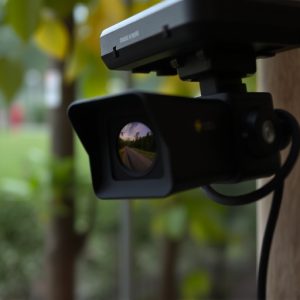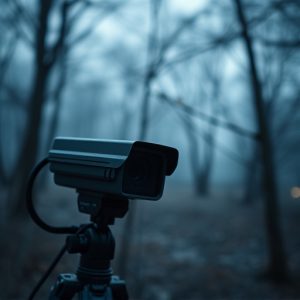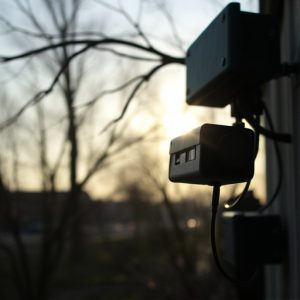Counter Surveillance Sweep: Spy Camera Detection & Safety Guide for Childcare
The Spy Camera Childcare Safety Guide emphasizes the importance of understanding and detecting spy c…….
The Spy Camera Childcare Safety Guide emphasizes the importance of understanding and detecting spy cameras in childcare settings. With diverse types of hidden cameras available, professionals must employ specialized tools like electromagnetic signal detectors, thermal imaging devices, and software to identify them. Conducting counter surveillance sweeps involves thorough inspections, disassembly of items, and documentation for legal and awareness purposes. Post-sweep, implementing robust security measures, staff training, regular maintenance, and open communication are crucial for maintaining a safe childcare environment according to the Spy Camera Childcare Safety Guide.
In today’s digital age, spy cameras pose a significant threat to childcare settings, making it crucial to be equipped with a comprehensive counter surveillance sweep guide. This professional method ensures the safety and security of young minds. The article delves into the intricacies of understanding various spy camera types and detection methods, equipping you with essential tools for a thorough sweep. It provides step-by-step procedures, guidelines for identifying and documenting hidden devices, and post-sweep actions to enhance childcare safety.
- Understanding Spy Cameras: Types and Detection Methods
- Preparing for a Counter Surveillance Sweep: Essential Tools and Equipment
- Conducting the Sweep: Step-by-Step Professional Procedures
- Analyzing Findings: Identifying and Documenting Spy Devices
- Post-Sweep Actions: Security Measures and Prevention Strategies for Childcare Settings
Understanding Spy Cameras: Types and Detection Methods
Understanding Spy Cameras is a crucial step in any comprehensive Spy Camera Childcare Safety Guide. These devices, often concealed and designed to be covert, come in various types tailored for different purposes. From small, easily hidden mini cameras to more sophisticated wireless options, each type has unique detection methods. Knowing these nuances is essential for professionals ensuring childcare safety.
Detection methods for spy cameras range from visual inspections using specialized equipment like infrared or UV lights that can reveal hidden lenses, to advanced software solutions capable of identifying unusual patterns or anomalies in video feeds. In today’s digital era, where technology advances swiftly, staying informed about the latest camera types and detection techniques is vital for maintaining a secure environment, especially in childcare settings.
Preparing for a Counter Surveillance Sweep: Essential Tools and Equipment
Preparing for a counter surveillance sweep requires a meticulous approach and the right tools to ensure effectiveness. A comprehensive spy camera childcare safety guide should be your starting point, outlining potential threats and the best practices to mitigate them. This includes identifying hidden cameras or tracking devices that may be present in areas like playrooms, nap corners, or staff break rooms.
Essential tools for a counter surveillance sweep include specialized detectors capable of identifying electromagnetic signals from hidden cameras, thermal imaging devices to visualize heat signatures, and magnetic sweeps to detect metal components in covert listening devices. Additionally, software solutions designed to analyze and map out potential surveillance networks are invaluable assets. A dedicated team trained in these techniques and technology is crucial for a thorough and successful sweep.
Conducting the Sweep: Step-by-Step Professional Procedures
Conducting the Sweep: Step-by-Step Professional Procedures
Professional counter surveillance sweeps require meticulous planning and execution. Begin by gathering intelligence, which includes assessing the area for potential hidden cameras or spy devices. This involves a thorough inspection of every nook and cranny, from walls and ceilings to furniture and electronics. Utilize specialized equipment such as thermal imaging cameras, metal detectors, and RF (radio frequency) detectors to identify any unusual signals or heat signatures that could indicate the presence of covert surveillance.
Once potential areas are identified, conduct a systematic sweep. This involves carefully disassembling items like televisions, computers, and fans to inspect internal components. Check for hidden compartments, micro cameras, or signal emitters. In childcare settings, focus on common spots like play areas, nap rooms, and staff break rooms. Employ a Spy Camera Childcare Safety Guide as a reference to ensure every angle is covered. Document all findings with high-resolution photographs and detailed notes. If any suspicious devices are located, follow proper protocols for safe removal or notification of relevant authorities.
Analyzing Findings: Identifying and Documenting Spy Devices
After conducting a thorough counter surveillance sweep, the next crucial step is analyzing the findings—a process that involves meticulous identification and documentation of any spy devices present. This step is essential for both the spy camera childcare safety guide and ensuring comprehensive coverage during professional sweeps. Experts recommend starting by examining all potential hidden locations, including wall outlets, light fixtures, ceiling tiles, and even childrens’ toys or clothing.
Each device discovered should be carefully documented with high-quality images and detailed descriptions to create a complete record of the surveillance equipment. This information is invaluable for both legal proceedings and providing parents with actionable insights to enhance their childcare safety measures. Proper documentation also serves as a powerful tool for raising awareness about the potential risks associated with spy cameras, empowering families to take proactive steps towards securing their homes and private lives.
Post-Sweep Actions: Security Measures and Prevention Strategies for Childcare Settings
After conducting a comprehensive counter surveillance sweep, it’s paramount to implement robust security measures and preventive strategies tailored for childcare settings. This involves a multi-layered approach to safeguard children and ensure their well-being in an environment that should be secure and free from unwanted intrusions.
A crucial step is to review and reinforce existing physical security features, such as secure entry points, access controls, and surveillance equipment. Additionally, all staff should receive training on Spy Camera Childcare Safety Guide best practices, including identifying potential threats, reporting suspicious activities, and maintaining a vigilant atmosphere. Regular maintenance checks of security systems and prompt replacement of any faulty equipment are essential to maintain an effective safety net. Moreover, fostering open communication between parents, caregivers, and authorities can significantly contribute to early detection and prevention of any malicious activities.
A comprehensive spy camera childcare safety guide is an indispensable tool for safeguarding our young ones. By understanding various spy camera types, preparing with the right tools, and adhering to professional procedures during counter surveillance sweeps, we can effectively identify and mitigate hidden threats. Analyzing findings and implementing post-sweep actions, including robust security measures, ensures a safer environment for children, fostering peace of mind for parents and caregivers alike.


